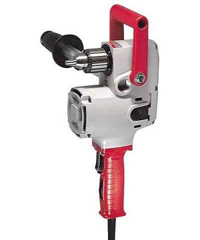
- Almost Green: How I Built an Eco-Shed, Ditched My SUV, Alienated the In-Laws, and Changed My Life Forever
- Douglas and McIntyre (2008)
[Editor's note: The following account is taken from Almost Green, the new memoir by amateur (though not hapless) eco-striver James Glave of Bowen Island, B.C. As we pick up the story, Glave is midway through the construction of the Eco-Shed -- the 280-square-foot sustainably designed writing studio and guest suite that now stands in the front yard of his family home. At this point in the saga, the ultra-green building is framed, wired and plumbed. But with available funds evaporating and marital tensions escalating, the anxious do-it-yourselfer is increasingly seeking out opportunities to add sweat equity to the project. Now our hero finds himself standing in the half-finished space speaking with Greg Sims, his heating and ventilation contractor. It seems the super-insulated Eco-Shed will need a small ventilation system to bring fresh air into the studio, and the time has come to figure out how to run the ductwork.... and not get killed.]
Then there was the question of ductwork. Sims joined me in the framed and roofed studio and looked up. He furrowed his brow for a moment.
"Hmmm."
"What's up?"
"Well, we're siting the HRV unit here, in this corner, and we need to get a five-inch duct all the way down there," he said, indicating the other end of the building. Trouble is, the rafters are running the wrong direction -- each one is perpendicular to the pipe. "Unless you want to build a chase, a long drywall- covered box that will hide the pipe, you'll need to drill quite a few large holes all the way through those rafters," Sims said. "You'll want to get your engineer to tell you where to put the holes so that they don't affect your structural stability. And it's a lot of drilling, maybe even a couple of days, and we're pretty busy right now..."
The hint was clear: he didn't have the time for the grunt work.
"I can drill the holes," I gamely offered.
"Well, if you're willing to do that, we'd definitely be able to get this done faster. A friend of mine could loan you the tool you need. But I've got to tell you, it could break your arm."
"It could break my arm?"
"I've seen it happen."
No small bit
The tool in question was a Milwaukee Hole-Hawg, a bear of a right-angle drill favored by plumbers and electricians who need to quickly punch holes through framing to run pipes and wires. As power tools go, this one's not for hobbyists: the Hole-Hawg weighs in at more than 11 pounds, and its 7.5-amp motor spins a chucked drill bit at 1,200 rpm. I'd be operating it while holding it above my head, in the awkward cramped spaces between the rafters. And locked in its business end will be a hole saw five inches across. Picture a shallow steel cylinder with sharp cutting teeth along the rim and you get the idea.
"The problem with hole saws, especially big ones, is they catch in the wood," Sims said. I already knew this; I'd drilled through a few floors and joists while renovating my Santa Fe place, and it wasn't much fun. Whenever the toothy bit stalls out in the material, which it does often, it stops instantly. But the drill keeps going, and depending on how powerful its motor is, the tool could easily and instantly wrap your whole body around in a gigantic pretzel -- and I'm not talking about the soothing version where you say "namaste" at the end.
The bigger the hole saw, the more teeth to catch, and should this happen while some poor bastard is standing on a ladder drilling over his head with a monster 7.5-amp motor, he could be thrown to the ground or wrenched like a rag doll into the rafter cavities above -- or some rather painful combination of the two. As far as safe work practices go, this one's a head-scratcher.
But not to Dan Parke. "It's always best to have all your pipes buried behind the drywall," he admitted. "But are you sure you don't want to just frame in a chase? I know it's ugly and will dominate a space this small, but that's a lot of drilling up there."
I was by this point hell-bent on breaking my arm, and nothing could convince me otherwise. "It's going to be a lot of work, I know," I told Parke.
I didn't want to break my arm, I assured him, but I also didn't want to spend the next twenty years staring at a long rectangular drywall-covered box running the whole length of the Eco- Shed's ceiling, thinking to myself, "If only I'd taken a few extra days when we were building this thing, that wouldn't be there."
Standard equipment
My engineer told me where to drill the 11 holes, and I marked off their locations, assembled a super-bomber scaffold to stand on, and psyched myself up. I had my gloves, my eye protection, my two-handled Hole-Hawg, and my wits about me. Only one essential piece of equipment remained: my DeWalt dw911. I headed to the basement to retrieve it.
My carpenter Jeremy Galpin -- who was framing the studio's small bathroom and who had made it clear he was not interested in breaking his own arm -- was suitably impressed when I set the device down on the slab and plugged it in. "Dude, where did you get that?"
The dw911 is a construction-site ghetto blaster, an ultra-rugged mustard-yellow plastic stereo radio surrounded by a "roll cage." Unlike other portable stereos, the unit cranks out tunes while simultaneously charging a cordless-tool battery pack. The dw911 is a building-industry staple; mine is authentically spattered with years of paint, drywall mud, and Liquid Nails, and I only have it because my neighbor was throwing it in the trash.
"I snagged it off the side of the road down the street, that house over there," I said. "They moved and stuck it out at the curb when they left, alongside a bunch of broken Ikea furniture."
"They were throwing it out? OK, that is an amazing score."
I plugged in the boom box and started flipping around the FM dial. Then I noticed the auxiliary-input jack on the front.
"Hey, check this out! I can plug my iPod into this thing! I'm going to go get it."
Galpin gave me a withering look. All my new-found dude credibility evaporated in an instant. I might as well have announced that I was attempting to grow tits.
"Dude, you can't plug a freakin' iPod in there. Come on. I mean, an iPod is just never gonna give you that authentic job-site ambience."
Who's the tool?
Galpin was right. If I was going to operate a tool that could break my arm, only one kind of sound track would do the trick, and it had no business being on an iPod. I'm talking about classic rock, the kind you can only hear on good old-fashioned advertiser- supported broadcast radio. It is the enduring blue-collar Canadian white guy format, the background Musak of my suburban adolescence, and the ambient noise I have been listening to on and off since the crews began building the monster house next door six months back.
I could pull in two classic rock stations -- one called the Fox, the other the Wolf. I settled on the former, which was offering the opening keyboard solo of "Teenage Wasteland". "That's more like it," declared Galpin.
Out here in the fields. I fight for my meals...
I picked up the Hole-Hawg and mounted the scaffold. We had a few extra lengths of the reclaimed Douglas-fir, which I wanted to use in the "millwork" -- the countertop, desk, shelving, and so on. Placed across a pair of sawhorses, the thick material made an ideal drilling platform. I had eleven holes to bore, and my engineer was making me work extra hard for them -- he'd instructed me to site them where the two-by-twelve rafters double up. In each case, I needed to grind through a full four inches of very old, very dry fir.
Galpin, who has served his time on the Hole-Hawg over the years, wished me luck. "When you feel it starting to catch, you've got to back off the trigger and pull back in a split second," he advised.
I don't need to fight. To prove I'm right. I don't need to be forgiven...
I clean-jerked the Hole-Hawg overhead, scrunched myself into the tight alcove between rafters, and lined the bit up on the pilot hole. "Here goes nothing."
I braced myself as best I could and pulled the trigger. The Hole-Hawg roared to life. The bit began rotating and sunk into the wood. It bucked a bit and proved tricky to keep level and lined up, but as I gripped tightly on the tool's twin handles, it chewed merrily through the wood. This isn't so bad, I told myself. In a minute or so, the bit would bottom out -- it would reach its maximum depth -- and I'd need to stop and pry out some material with a hammer and screwdriver before I could proceed.
It's only teenage wasteland...
Then, in an instant, I found myself sprawled on the concrete floor. The borrowed $450 Hole-Hawg bounced off the scaffold behind me and landed on the floor. The prophecy was fulfilled! Oh shit, I've broken my arm!
"Dude, are you ok?"
I was. I'd allowed myself go limp as I hit the concrete, and I rolled into the fall. I was rattled, but my skeleton was intact. I immediately realized what I had done wrong: I tried too hard to protect myself. As I felt the bit catching, I tried to release the trigger -- but I was wearing my thick leather work gloves, and the bulky padded material had gotten in the way. As expected, the tool threw my body to the right. I instinctively let go of the handles, but not before the Hawg launched me through the air. Fortunately, I didn't have far to fall.
Sustainable damage
I swore under my breath and took off the glove. Now when the bit caught and wrenched my upper body, I'd only briefly munch my knuckles on the ceiling before backing off. Jesus, Mary, and Joseph, I thought to myself, there are no free rides in this sustainable-building business. I was also lucky enough to be drilling hard up against the studio's back wall: I leaned into the stud cavities and braced myself against the framing. "That's it; really wedge yourself in," said Galpin. "That helps."
And that's all it took. The tool caught dozens more times, but having taken my obligatory spill, I reached an understanding with the Hawg. The instant the bit snagged in the fir, I released and pulled back. Like so many things in life, the task simply called for a little practice, focus, and confidence. It took me two long, sweaty afternoons to bore the eleven holes and about fifteen minutes for Sims to thread his flexible duct through them. I shaved roughly six hundred dollars off the cost of my ventilation system, a savings that made me feel good. And every tradesman who subsequently came through the place marveled at their glory. "Holy shit -- who drilled all those holes?" a visiting carpenter later asked me, eyebrows raised.
"Dude," I told him. "I did."
Related Tyee stories:
- Chainsaw Love
Reviewed: David Lee's Chainsaws: A History - My Knotty Problem with Wood
I've hugged trees. But I also wanted a beautiful wooden house. - In Telkwa, Surviving Off the Grid
It's minus 34 tonight and the generator just quit. Why did we say no to Hydro?




